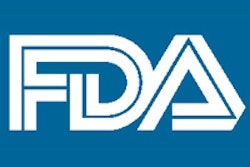
The fad of using e-cigarettes is so new that there is no long-term data about their impact on health to study. At a glance, they seem to be a significantly less harmful alternative to smoking cigarettes. Where do e-cigarettes belong in tobacco-use conversations, particularly with young people, who are at an age when many smokers and smokeless tobacco users begin the habit?
Such conversations have become integrated with dentistry in many practices. Now researchers from the University of North Carolina at Chapel Hill and Ohio State University have taken a look at how e-cigarettes are viewed by other medical professionals in a study published in the Journal of Adolescent Health (July 2014, Vol. 54:6, pp. 678-683). It is one of the first to look at the topic as it pertains to adolescents.
“Education about e-cigarettes could help providers deliver comprehensive preventive services to adolescents at risk of tobacco use.”
"Healthcare providers who treat adolescents may need to incorporate screening and counseling about e-cigarettes into routine preventive services, particularly if the prevalence of use continues to increase in this population," the researchers wrote. "Education about e-cigarettes could help providers deliver comprehensive preventive services to adolescents at risk of tobacco use."
E-cigarettes deliver vaporized nicotine in batter-powered devices, and public interest in them is "skyrocketing," the researchers noted. Without regulations, the industry is in a "Wild West" state as businesses scramble to carve out a piece of an exploding market.
While e-cigarettes don't rely on tobacco combustion, eliminating the intake of harmful byproducts such as carbon monoxide, there is a great deal of controversy.
"There is concern about the use of propylene glycol as a humectant, as well as significant variation in the toxicity of the 'e-liquid' (the combination of humectant, nicotine, and flavoring inside an e-cigarette cartridge)," the researchers explained.
Meanwhile, policymakers are scrambling to catch up with the popularity of e-cigarettes amid a lack of data, making regulations hard to craft. "Public health experts are currently divided about whether e-cigarettes are best understood as a potential harm-reduction tool for current smokers or a "gateway" to nicotine dependence and, in turn, other tobacco use.
The researchers noted that use among young people has jumped in a short period of time, based on the data from other studies. From 2011 to 2012, they noted that use by middle school students rose from 1% to 3%, while use increased from 5% to 10% among high school students, according to the National Youth Tobacco Survey (Morbidity and Mortality Weekly Report, September 6, 2013, Vol. 62:35, pp. 729-730). Interestingly, 10% of those high school students had never smoked a traditional cigarette.
Survey of healthcare providers
Against that backdrop, the researchers "sought to describe providers' awareness of e-cigarettes and to assess their comfort with and attitudes toward discussing e-cigarettes with adolescent patients and their parents." While they used a sample of physicians and nurse practitioners, the dental community could potentially use the data to craft its own position on the rapid rise in e-cigarette use.
The researchers tapped the list of clinicians who treat adolescents from the Minnesota Board of Medical Practice and Nursing. They emailed 3,923 providers, and a total of 615 were eligible and agreed to participate. There was an 85% cooperation rate among them.
After an explanation of what an e-cigarette is, the questionnaire the participants received asked if they had heard of them prior to reading about them in the survey. Those who positively responded had a list of follow-up questions, starting with the source of their knowledge about them and whether they believed that they had treated a young person who had used an e-cigarette.
Other questions asked the respondents to gauge their level of comfort when discussing the topic with adolescent patients, rate how strongly they felt if they thought they were safer than traditional cigarettes and smokeless tobacco, and indicate their interest in learning more about e-cigarettes.
The researchers found that 92% of the respondents had heard of e-cigarettes, and out of 516 respondents, 62% stated that their patients, 39% responded the news, and 37% said that advertisements were the sources of information where they had heard about them. Far fewer said that professional sources (24%) or colleagues (11%) were their sources. "This finding suggests the critical need for providers to receive more education from unbiased, professional sources about the state of the science regarding e-cigarettes," the researchers explained.
Strikingly, 83% of those who had heard of e-cigarettes acknowledged that they knew "little" or "nothing at all" about them. And 53% of those who were aware of e-cigarettes were "somewhat" or "very" uncomfortable with talking to patients about them. Given those numbers, it makes sense that 88% of the respondents "somewhat" or "strongly" agreed that they would like to learn more.
Attitudes about the relative safety of e-cigarettes are still taking shape. "On average, providers moderately agreed with a combined measure indicating that e-cigarettes are safer than cigarettes and smokeless tobacco" (mean 2.7, standard deviation [SD] 0.8), the researchers wrote. "However, providers expressed considerable concern that e-cigarettes could be a gateway to other tobacco use" (mean 3.0, SD 0.8).
The results point to a clear need for more education about e-cigarettes among providers who see a great number of adolescents, putting dental professionals among them.


















